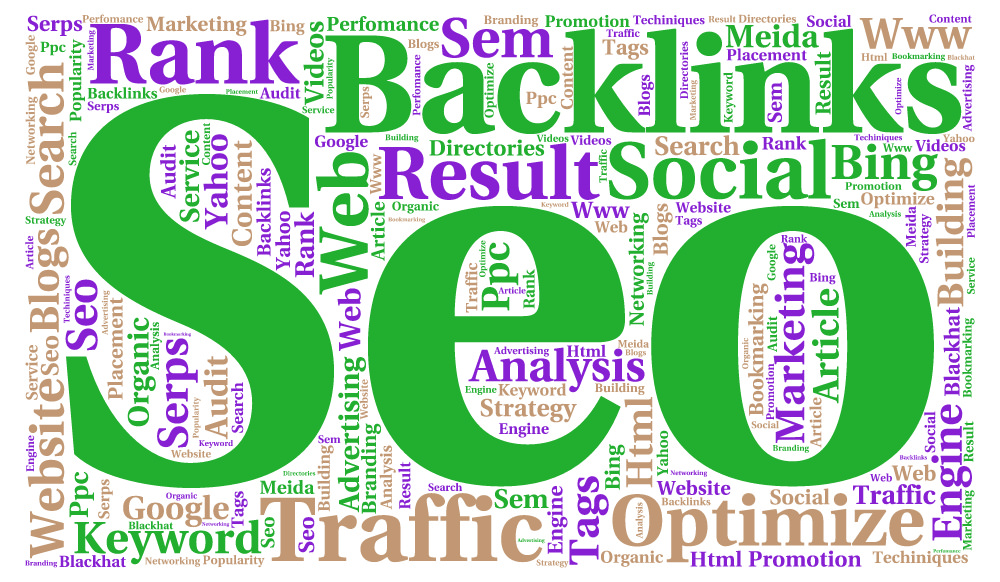

Step One: Optimise your page title
Your page title is the first thing most people will see when looking for your business. It’s the big, bold text that Google adds to the topmost of your website’s search engine listing. Whenever you’re using WordPress for your website, you can modify your page title using the SEO Ultimate plugin.
If your website is a static HTML and CSS page, you can use the <title> tag to configure your title text. Since your title is the first part of your search listing that users will notice, it has to achieve several things at once:
- Update users about what your website offers
- Give users a reason to click through to your website
- Include your target keyword, for on-page SEO purposes
From an SEO perspective, it’s best to keep your target keyword as close to the beginning of the page title as possible. Using your target keyword near the beginning of your title also makes it easier for users to quickly understand what your page is about, improving CTR.
Here’s another example of our company’s search engine listing, this time with a red line to show the title element:
You can see that this listing meets all of the criteria above. It tells users exactly what our website offers, which is an SEO service. It gives them a reason to click by mentioning our reliability. It also includes our target SEO keyword, right at the beginning of the title.
Here’s another example, this time for the keyword “Corporate Film Makers”. The title has the target keyword right at the beginning, with a key benefit (the ability to compare quotes and book online) just after the target search keyword:
This keyword-benefit title format is a great option for achieving a strong balance between SEO and CTR. Since your keyword is right at the beginning of your title, your listing is highly significant and optimised for rankings. Since a benefit is included, users are far more inspired to click.
Step Two: Optimise your meta description
The second step is to look at optimising is your page’s meta description. This is the extract of text that Google displays below your page’s title and URL in the search results. It’s usually a short description of the page that describes the product, service or information you offer.
The meta description is one of the most misunderstood aspects of SEO. According to Google, it does not play a major role in helping your page rank for its target keyword. However, it played a huge role in determining your page’s click-through rate from organic search.
Many website holders don’t add meta descriptions to their pages. If your page doesn’t have its own meta description, Google will generate one automatically by taking a snippet of text from your page that it thinks is most relevant for each keyword.
Optimising your meta description can duplicate, or even triple, your listing’s CTR. If your page has no meta description at all, merely adding one can cause the number of people that click on your listing to skyrocket, resulting in more traffic, more leads and more sales.
Like a good page title, a good meta description needs to do several things at once:
- Inform users about what to expect after they reach your page
- Mention a benefit, preferably one that’s unique to your listing
- Finish with a call to action that makes users want to click
Here’s our company’s search engine listing again, this time with all of the three above elements highlighted:
Highlighted in first blue is information on what users can expect after they click through — in this case, a description of the company. In the second blue, a unique benefit of our listing.
This description, benefits, call to action formula works very well for creating a meta description that improves your organic search CTR. It’s also versatile enough to work for nearly any page type, from an informational website to a commercial page for a local business.
Step Three: Use a short, highly relevant page URL
The last element in an excellent organic search listing is your page’s URL. Your URL normally has the smallest impact on click-through rate, but it still makes enough of a difference to make it worth optimising.
On a domain level, there’s very little you can do to optimise your URL. However, on the different page level, it’s best to make sure your URL consists of your target keyword, is short enough that it’s not distracting for users, and doesn’t conflict with your meta description or page title.
It’s short and simple which includes the target SEO keywords. It also precisely describes what’s on the page and doesn’t conflict with the page title or meta description.
Here at The Jigsaw SEO, you will get a complete solution for your SEO campaign. So do contact us!


